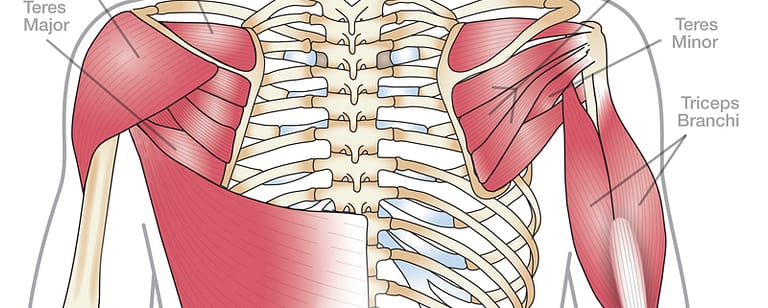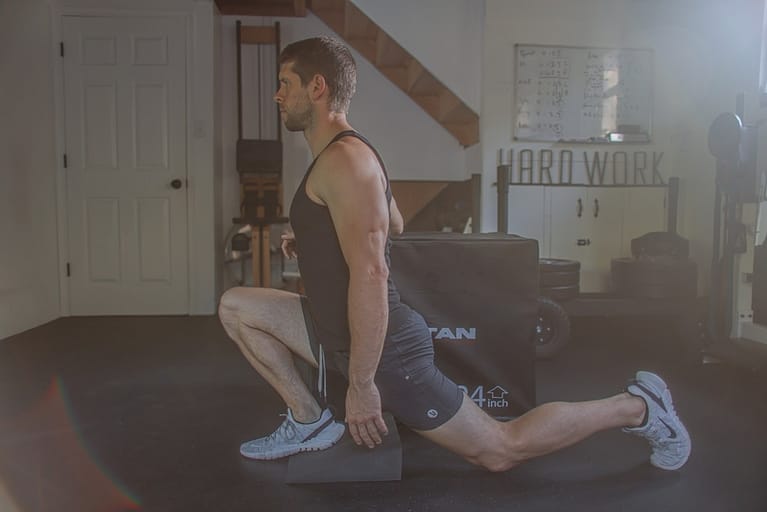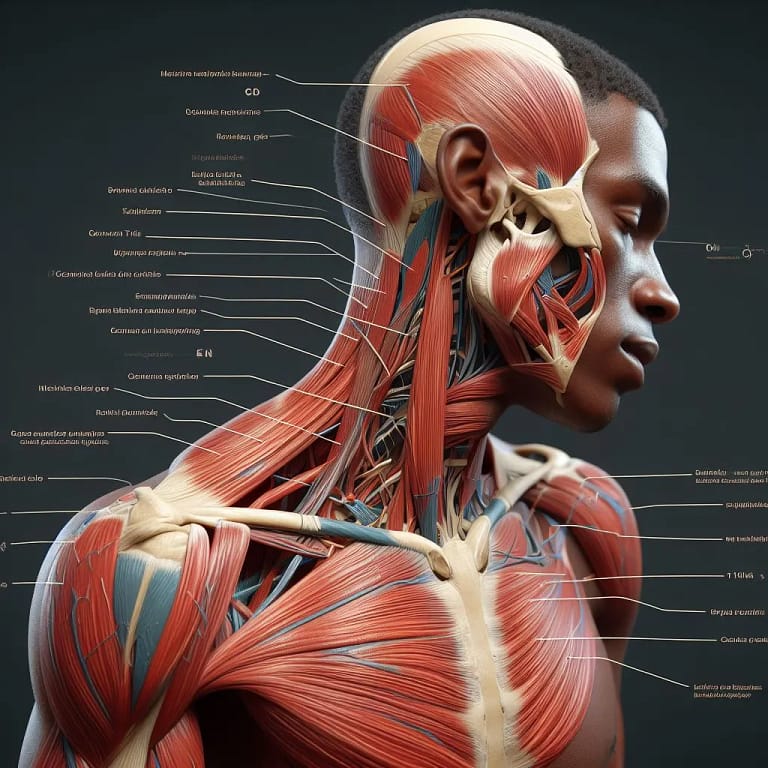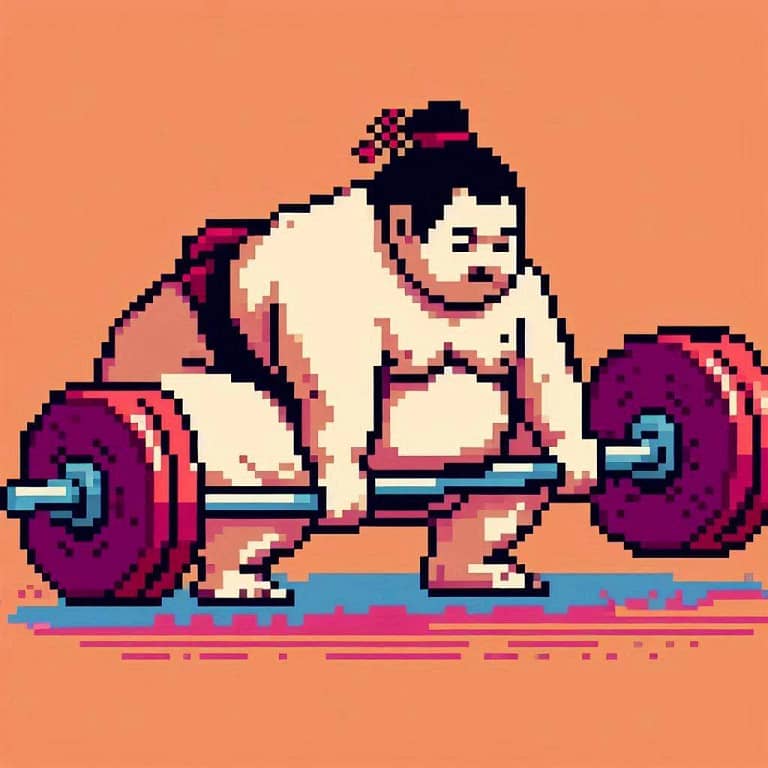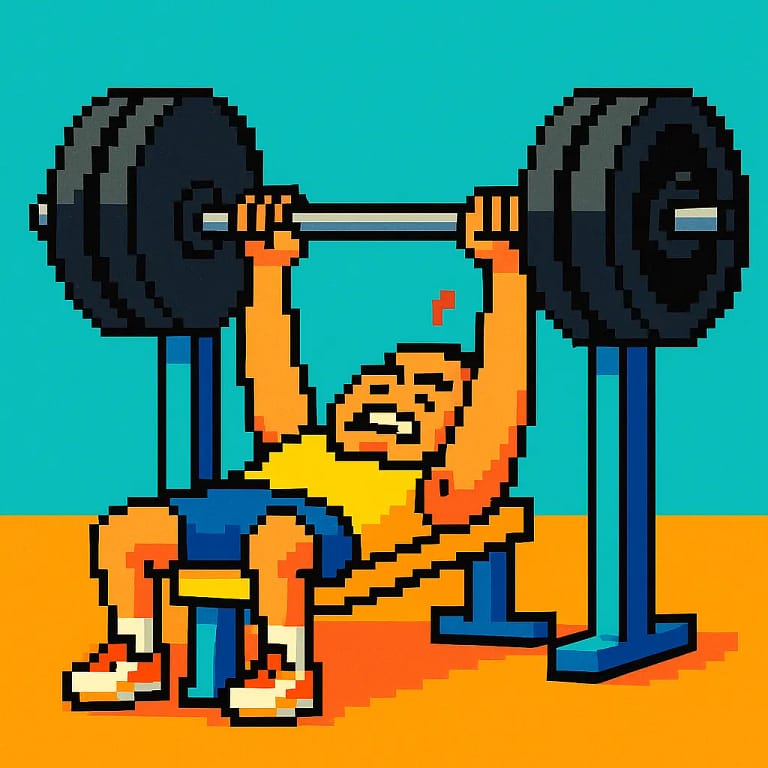You Can’t Avoid the Deadlift
5 Benefits of Deadlift Training
Years ago I was training a new client at an Anytime Fitness where I was training. She had just finished telling me why she would never deadlift again. “It’s dangerous, and you are asking for back pain if you train the deadlift.”
Immediately after she finished explaining that to me, she dropped her towel, bent over and picked it up and walked away.
Refusing to be a smartass and because I hate confrontation, I merely thought to myself, “does she realize she technically just performed a deadlift?”
Of course the resistance was… whatever towels weigh. But that doesn’t change the fact that we can’t really avoid deadlifting. If you pick up a sock off the floor, or take your baby out of their crib, or try to suplex a friend, all of these things require the ability to pick up an object.
So to that end, training the deadlift in some form or capacity is very important for overall health.
If loaded and performed correctly, intelligent deadlift training can yield positive outcomes on muscular strength in the posterior chain, improve posture, enhance mobility and flexibility, and increase general physical preparedness.
So to that end, training the deadlift in some form or capacity is very important for overall health.
Conventional Deadlift
To perform the deadlift, start by standing in front of the barbell with feet shoulder width apart. When you look down, the barbell should cover the middle of your feet. Bend at the hips and reach down for the bar with an overhand grip. Your hands should be on the outside of your knees.
Engage your lat muscles (the muscles underneath your armpits) by pulling the bar in towards you. Now, sink your hips down and let your chest rise and push your heels through the floor.
DON’T let your hips shoot upward first, this will put too much strain on your lower back. Rather, stay patient with the pull. Once the bar starts to rise, you can squeeze your glutes to bring your hips through to lock the weight out. Try to lock your hips and knees out simultaneously before gently lowering the bar to the floor. Don’t lose position as you pull the next rep.
As you get stronger, you eventually will be able to pull more than you can grip, so you may switch one hand to an outward grip. This is called a mixed grip, and it will allow you to hold more weight.
If loaded correctly, deadlift training can yield positive results in muscular strength of the posterior chain, improve posture, enhance mobility and flexibility and increase general physical preparedness. Keep your reps to 5-10 to allow for a little bit more load on the bar.
The conventional barbell deadlift isn’t the end all, be all. If it doesn’t work for you, there are plenty of other variations you can implement to reap the benefits of deadlifting.
Below is an outline of the many benefits of deadlifting, as well as exercises that target the same muscles in a different fashion.
Strengthen the Posterior Chain
Deadlifts primarily target the posterior chain, which are the muscles along the back of the body like the spinal erectors, glutes, hamstrings and calves among others. Strengthening these muscles is crucial to having a healthy spine and preventing injuries.
A strong posterior chain supports proper posture, reduces the strain on the lower back and improves functional strength.
What are the muscles of the Posterior Chain?
The posterior chain is a group of muscles located at the back of the body primarily responsible for movement and stability. These muscles consist of the lats, erectors, glutes, hamstrings, and calves.
The glutes are the largest muscle of the body. It is responsible for hip flexion, extension and trunk rotation. The hamstrings are also responsible for hip extension and also knee flexion. The lower back muscles or erector spinae are essential for keeping an upright posture. The calves are important for stabilizing the body during lower body movements. It also plays a role in ankle movement.
While the deadlift targets all of these muscles, it is important that you give each one care and attention. Check down below for exercises targeting each of the posterior chain muscles specifically.
Postural Improvement and Core Stability
Whether you realize it or not, deadlifts require substantial core stability in order to maintain proper form throughout the movement. These core muscles are vital in stabilizing the spine. The stronger your core is, the less chance there is that your lower back will round. Training your core to stay strong during a deadlift will help improve your day to day activities.
The deadlift can also address postural issues. Most postural problems amount from tightness in anterior muscles and weakness in posterior muscles.
For instance when the pectoral muscles (chest) become tight, it causes a rounding forward of the shoulders which can lead to neck and shoulder pain. But when the muscles of the upper back are well developed, these postural related pains don’t occur.
Because the deadlift trains the posterior chain, it fights against some of these poor postural positions.
Enhance Mobility and Flexibility
One common complaint I’ve heard about the deadlift is that it makes you “tight” or inflexible. But really, it has everything to do with your setup.
Any exercise that you select should be trained through full range of motion. Some movements lend themselves more to full range of motion training and some don’t, but all can be modified to your goal.
Jefferson Curl
The Jefferson curl is a great example of how your range of motion can change an exercise. The Jefferson curl is still a deadlift, but with a greater range of motion, making it more difficult to add load.
It trains the parts of the posterior chain that tend to be weaker and more prone to injury. Addressing these weaknesses can go a long way in keeping you injury free.
You can also place weight plates under your feet to increase the range of motion of the conventional deadlift. This is known as a deficit deadlift and helps build power from the bottom position but as a side effect it improves your range of motion. Naturally you can’t use the same weight that you could pull from the floor but it is still a great way to improve your strength and your range of motion at the same time. These two are key aspects in improving your capacity for General Physical Preparedness (GPP).
Increase GPP
General Physical Preparedness. Your ability to perform on demand. Need to pick that heavy object now with no warm up? No problem! Need to jump up onto that ledge in a blink of an eye? You got it!
The deadlift is one of those “bang for your buck” types of exercises. If you only trained the deadlift and nothing else, you would still be… pretty bad ass. If you only were allowed to do bicep curls for the rest of your life you would find yourself out of shape in about 10 days.
But if you have ever done a set of 10 heavy deadlifts, you will find yourself winded. Very winded, as if you just ran down the block and back at full speed.
Deadlifts will make you well rounded provided you perform them safely and intelligently. A training session of 3 sets of deadlifts for 10 repetitions at 75 percent or higher of your 1 rep max will leave you feeling weak in the knees and make you never want to experience that again.
However when it comes time to move that heavy object in everyday life, whatever it may be, you will be ready. You’ll think, “at least I don’t have to do 3 sets of 10 reps”. The deadlift is an insanely effective training tool to make everyday life easy, but you have to make sure you perform it correctly and safely.
Considerations of Safety Practice
While deadlifts provide a number of benefits, they should not be taken lightly. Some safety precautions should be taken.
- Focus on technique
- Start Light
- Don’t Push Through Pain
TAKE your time and learn the technique of the deadlift. A lot of people don’t realize that if done correctly, the deadlift loads the hips more than the lower back.
ALWAYS go lighter than you think you should. But that is great advice for any lift. The more you can benefit from a lighter resistance, the easier it is on your joints allowing you to recover and come back to training sooner
PLEASE don’t push through pain. I can admit that I am guilty of this one. Sometimes you want to push because you may be able to set a new personal record or your set is close to over and you want to finish without quitting, but it is not worth an injury that prevents you from lifting for an extended period of time. The best ability is availability.
Using a kettlebell can be more effective because it allows the trainee to bring themselves closer to the weight. The closer the weight is to your center of gravity, the less stress there will be on the lower back.
When programming for the deadlift, I would advise against deadlifting above 80 percent of your one rep max more than once per week unless you are a powerlifter who is looking to increase their numbers or ramping up intensity prior to a meet. Everyone else can benefit from it once per week.
Deadlifts aren’t the only way to train the posterior chain. Here are some other exercises you should be utilizing to make sure you have a strong and healthy posterior chain.
Glute Bridges
Glute bridges are a great option especially when you don’t have a barbell at your disposal. You can use a band around your legs to work the abduction muscles during the bridge.
Lying on the floor with your knees bent and feet flat on the floor with your toes pointing forward, tuck your pelvis towards your face and extend your hips up in the air, squeezing your glutes. Hold for a brief moment before lowering slowly to the start position. Depending on how slow your eccentric phase is, you can perform 10 – 25 repetitions.
Add a band around your legs to really feel the glutes burn.
Hip Thrusts
Hip thrusts are a great way to really put load on the glutes. All you need is a bench, a barbell and a pad to place on the bar so that it doesn’t dig into your hips.
A standard bench is fine but make sure it is not going to move on you when setting up the movement. You also want to make sure that the bench isn’t too high because that can make it difficult to set up as well.
Since this is a similar exercise to the glute bridge, the same rules apply. Scoop your hips under as you extend your hips to the ceiling and squeeze your glutes. Pause for a second and hold the weight there before slowly returning to the start position, but don’t go so low that the bar touches the floor because we don’t want to lose tension on the glutes.
Try to perform sets of 10 – 25 reps. The sets of 25 are hell!
Barbell Good Mornings
Do you want sore hamstrings? Then do I have the exercise for you.
Place a bar on your back like you are setting up to do a back squat, instead you are going to hinge at the hips, keeping your knees fairly straight but not locked out. Hinge until your upper body is close to parallel to the floor. You should feel a crazy stretch in your hamstrings. Hold here for a brief pause before returning to the start position.
Start light. Very light. Hell, the empty barbell for 3 sets of 25 reps had me so sore the next day!
Low Back Extensions
I don’t do this exercise as often as I should. But if you have an extension bench, then make sure you get these in every once in a while. They really target the low back erectors.
Set yourself up on the bench so that your upper body is leaning forward at a 45 degree angle and your legs should be locked in with your calves up against the padded bar and your hips against the top pad. Hinge at the hips until your upper body is parallel to the floor, or further if you are comfortable with the range of motion. Pause briefly at the bottom before returning to the start position.
If you hold a weight behind your head you can add extra resistance to the movement. Keep to 10 to 15 repetitions on this one.
Conclusion/Training Considerations
Thanks to their ability to strengthen the posterior chain, improve core stability, and promote better posture, deadlifts are an important exercise for improving back health and enhancing overall strength and athletic ability. By incorporating deadlifts into your regimen with proper technique, you can enjoy a stronger, healthier back that supports both athletic performance and everyday activities.
| Movement | Sets | Reps | Frequency |
| Deadlift | 3-5 | 5-10 | 1x per week |
| Hip Thrust | 3 sets | 25,15,10 | 1-2x per week |
| Glute Bridge | 3 sets | 10 | 1-2x per week |
| Barbell Good Mornings | 3 sets | 15-25 reps | 1-2x per week |
| Low Back Extensions | 3 | 10-15 reps | 1-2x per week |
Key Takeaways
References:
- Berglund L, Aasa B, Hellqvist J, Michaelson P, Aasa U. Which Patients With Low Back Pain Benefit From Deadlift Training? J Strength Cond Res. 2015 Jul;29(7):1803-11.
- Fischer SC, Calley DQ, Hollman JH. Effect of an Exercise Program That Includes Deadlifts on Low Back Pain. J Sport Rehabil. 2021 Feb 24;30(4):672-675.
- Nigro F, Bartolomei S. A Comparison Between the Squat and the Deadlift for Lower Body Strength and Power Training. J Hum Kinet. 2020 Jul 21;73:145-152.

